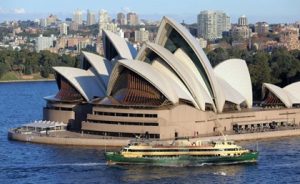
Mechanical Engineering Design, Commissioning Plans and O&M Manuals | Sydney Opera House Redevelopment
“It stands by itself as one of the indisputable masterpieces of human creativity,
not only in the 20th century, but in the history of humankind.”
Expert evaluation report to the UNESCO World Heritage Committee, 2007.
Recognised around the world as arguably Sydney’s most iconic building, the Sydney Opera House (SOH) stands on the traditional land of the Gadigal people and is known as Tubowgule, meaning “where the knowledge waters meet”. The SOH site was originally a fishing ground for the Gadigal people, providing the perfect location in which to feast, gather, sing, dance and tell stories.
In the mid-1950s it became apparent to the Sydney Symphony Orchestra and local bodies that the orchestra’s current facilities were inadequate. In response, an international competition was launched for entrants to design a National Opera House, which it was proposed would be erected at Bennelong Point. The competition attracted great interest from all around the world with a total of two hundred and twenty three entries from across twenty eight countries. The winner was design 218 by Denmark architect Jørn Utzon; incorporating sail like structures and taking advantage of the location and views, the design was considered ahead of its time.
Following two years of planning, the construction of the SOH finally began on 2nd March 1959. After a few ups and downs and budget blowouts, Queen Elizabeth II attended the SOH’s grand opening ceremony on 20th October 1973 to mark the completion of this architectural and engineering masterpiece.
Over the years, the SOH has staged both national, international and indigenous performances, providing state of the art facilities for all. As part of 40th anniversary celebrations, the NSW government committed funding to a $202 million renewal project to replace technology and machinery that had reached the end of its working life. In addition, new areas have been opened to the public and the government has ensured the SOH is properly equipped to inspire future generations of artists.
Working closely with Engie Mechanical Services, Dewick & Associates provided mechanical D&C engineering services for the project, including a Dilapidation Report on existing equipment, review and reporting on Australian Standards and SOH briefing documentation to ensure design compliance, heat loads, equipment scheduling and technical data review, in addition to Elec for Mech schedules, air and water side static calculations, fire system reviews and NCC Section J Mechanical Assessment.
Dewick & Associates also provided design advice in relation to the protection of the SOH’s Grand Organ, the largest mechanical tracker-action pipe organ in the world. The construction phase of the redevelopment would produce dust and dirt within the main auditorium area and cause fluctuations to the temperature and humidity of the space, all of which would affect the ongoing performance of the organ. To mitigate this, the organ was provided with a shroud and ventilated during construction works to ensure no ingress of contaminants.
In 2021, Dewick & Associates provided Mechanical Services Commissioning Plans in addition to O&M Manuals to complete the documentation supporting this project. The Commissioning Plans detailed key project contacts and installation descriptions, in addition to the processes and forms that must be completed to make sure all equipment is working effectively and efficiently and in accordance with the design intent. The Mechanical Services O&M Manuals included the scope of works, detailed system descriptions, maintenance requirements, fault finding procedures, technical data, manufacturers literature, and space for insertion of the Contractor’s Certificates, Commissioning Results and As Installed Drawings.
Mechanical Services Contractor: Engie Mechanical Services




